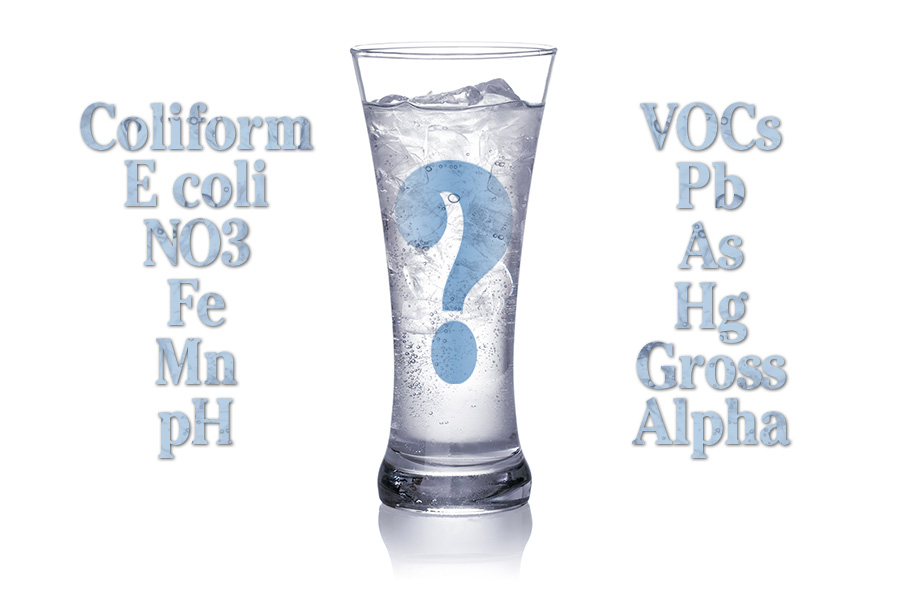
Coliform bacteria are microorganisms (i.e., too small to be seen without a microscope) that originate in the intestinal tract of warm blooded animals and as organisms in soil and vegetation. Coliform bacteria that are often associated with human and animal fecal matter.
Coliform bacteria are not necessarily disease producing themselves but can be indicators of organisms that cause adverse health effects.
Escherichia coli (E. coli) are bacteria that live in the intestines of people and animals (i.e., fecal coliform indicator). The confirmed presence of E. Coli bacteria indicates that infectious microorganisms may be in your water.
Most strains of E. coli bacteria are harmless although certain strains cause illnesses. Drinking water sources can be contaminated by storm water run-off from roadways, farms and livestock operations, discharges from sewage treatment or septic systems.
If total coliform bacteria are found, further testing is required to determine if the coliform bacteria are of fecal origin (e.g., Escherichia coli (E. coli)).
A properly collected and preserved (with Sodium Thiosulfate) sample must be obtained. The “holding time” (i.e., time which Total Coliform must be analyzed after sample collection) is only 30 hours. The samples must be placed on ice or refrigerated (4 degrees Celsius +/- 2 degrees) shortly after sampling.
There are a few NJDEP certified test methods for Coliform Bacteria, however only the presence/absence needs to be reported as an initial test procedure. Certain methods enumerate the colonies of bacteria found per 100 ml. of water. Basically, the bacteria are incubated in a prescribed media or reagent for 24 hours at 35° celsius. It is highly recommended to always repeat the positive Total Coliform analysis with an additional sample for confirmation.
Total Coliform bacteria are classified as a “primary” standard and have a Maximum Contaminant Level (MCL) of zero (0) colonies/100ml.
Potential health effects include assorted gastroenteric infections and diseases. Symptoms such as nausea, vomiting, diarrhea, and stomach cramps are typically noticed. People with weakened immune symptoms are especially susceptible to illnesses. E. coli 0157:H7 strain has been isolated and determined to be a potential cause of deaths, usually as a result of a complication of the infection.
The answer is no for drinking water consumption. Boiling the water for at least one minute is a must before drinking.
Short Term: Purchase bottled water.
Long Term:
If you install a water treatment system, be sure to conduct another test after the water has been treated to verify that the system is working effectively.
Your best help may be your local Health Agency. Also, go to the Helpful Links section of this website.
This information is meant to serve as a basic overview of the material discussed. Always obtain professional advice prior to implementing a plan of action.
Nitrate (chemical symbol “NO3”) and related nitrogen compounds (i.e., nitrite, ammonia, organic nitrogen) occur naturally in soil, water, plants, and food. Nitrate is the more stable oxidized form of combined nitrogen in most environmental media. Most nitrogenous materials in natural waters tend to be converted to nitrate. Groundwater levels of nitrate may range from 20 ppb (ug/L) or more, with higher levels characteristically occurring in shallow aquifers beneath areas of extensive development. Major sources of nitrates in drinking water include agricultural or residential fertilizer use, sewage, animal feedlots, landfills, and faulty septic systems. Other sources include golf courses and natural deposits.
A properly collected sample must be obtained. The “holding time” (i.e., time which nitrate must be analyzed, if not preserved as per certain methods, after sample collection) is 48 hours. There are a few NJDEP certified test methods for nitrate such as cadmium reduction, ion chromatography, and ion selective electrode. The detection limits vary by method and instrumentation. The test method must achieve a detection limit lower than the Maximum Contaminant Level (MCL).
Nitrate is a constituent classified as a “primary” standard and has a Maximum Contaminant Level (MCL) of 10 ppm (mg/L – milligrams per Liter).
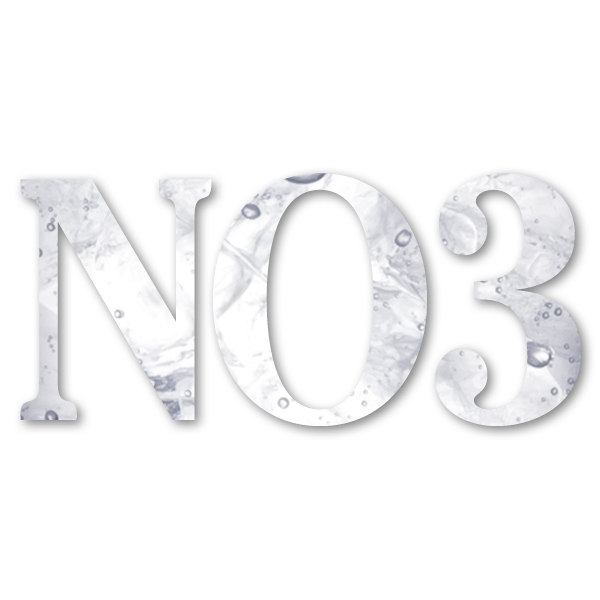
Nitrate contaminated drinking water is of concern because it affects human and livestock health. Potential health effects include methemoglobulinemia, a form of anemia, caused by the body’s reduction of nitrate to nitrite. Also known as Blue-Baby Disease”, it can cause asphyxia. Infants up to three months of age are the most susceptible with regard to nitrate because 100 percent of the ingested nitrate can be transformed to nitrite in the infant. Basically, the ability of the blood to carry oxygen to the body’s tissues is decreased. Pregnant women are also more susceptible.
The answer is no for drinking water consumption. You should alert the local health agency and follow their advice. Also, do not boil water as a method of treatment because this can increase the levels of nitrate as the water evaporates.
Short Term: Purchase bottled water.
Long Term:
If you install a water treatment system, be sure to conduct another test after the water has been treated to verify that the system is working effectively.
Your best help may be your local Health Agency. Also, go to the Helpful Links section of this website.
This information is meant to serve as a basic overview of the material discussed. Always obtain professional advice prior to implementing a plan of action.
Iron (chemical symbol “Fe”) and Manganese (chemical symbol “Mn”) are naturally occurring elements and are primarily regulated for aesthetic and economic (i.e. damaging effects of corrosion, scaling, staining, and sedimentation) purposes. However, new analysis on Manganese suggests that showering in contaminated water could have permanent effects on the nervous system. Both are noted as imparting a taste and color to drinking water. A brownish color to laundered clothing and staining (brown, rusty/orange, black) of plumbing fixtures are common indicators.
Also, iron and manganese contribute to the cause “hard” water which necessitates the use of larger amounts of soap to form suds and responsible for scaly deposits in pipes and water heaters.
Iron bacteria can be a real nuisance. These bacteria can form slime growths that utilize the iron in the water as a source of energy.
A properly collected and preserved (with Nitric Acid) sample must be obtained. The “holding time” (i.e., time which iron and manganese must be analyzed after sample collection) is 6 months. There are a few NJDEP certified test methods for iron and manganese including Atomic Absorption (AA) and Inductively Coupled Plasma (ICP). The detection limits vary by method and instrumentation, however the Reporting Limits need to be less than Recommended Upper Limits.
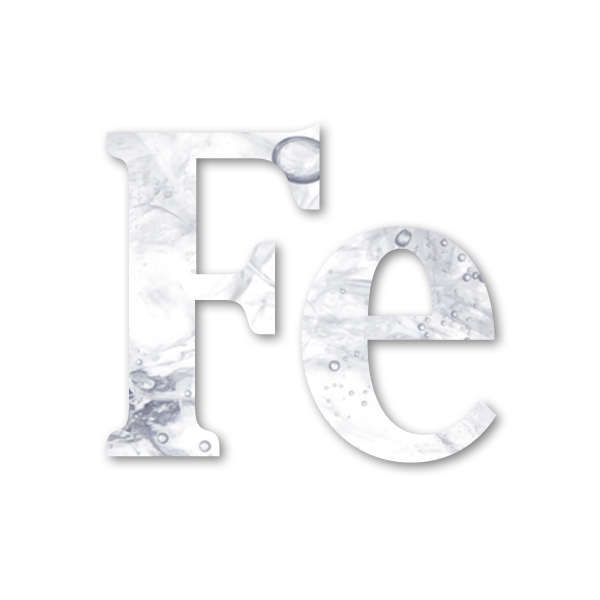
Iron and Manganese are constituents classified as “secondary” standards (aesthetic) and have Recommended Upper Limits of 0.3 ppm (mg/L – milligrams per Liter) for Iron and 0.05 ppm for Manganese.
These elements are not known to directly affect health. However, a new study suggests that Manganese inhaled from showers poses public health threat.
To be sure, you should consult with the local health agency.

Short Term: Purchase bottled water.
Long Term:
If you install a water treatment system, be sure to conduct another test after the water has been treated to verify that the system is working effectively.
Your best help may be your local Health Agency. Also, go to the Helpful Links section of this website.
This information is meant to serve as a basic overview of the material discussed. Always obtain professional advice prior to implementing a plan of action.
This is a numerical expression that indicates the degree to which water is acidic or alkaline. These various degrees are represented on a scale of 0 to 14, with 0 being the most acidic, 14 most alkaline, and 7 neutral. Scientifically, pH is the negative logarithm of the effective hydrogen-ion concentration. High pH levels are undesirable since they may impart a bitter taste to the water.
Furthermore, the high degree of mineralization associated with alkaline waters will result in the encrustation of water pipes and water-using appliances. Certain areas lacking limestone typically have low pH (acidic waters). A bluish-green stain on a tub or sink of a home using copper water pipes may indicate that acidic water is corroding the metal parts of the plumbing system.
A properly collected sample must be obtained. The “holding time” (i.e., time which pH must be analyzed after sample collection) is 15 minutes and is referred to as an “analyze immediately” parameter.
The NJDEP certified test method is electrometric and utilizes a meter with a pH electrode. The meter/electrode must be calibrated prior to use using fresh buffers and provide for Automatic Temperature Compensation.

pH is a constituent classified as a “secondary” standard and is regulated for aesthetic purposes with a recommended Optimum Range of 6.5 to 8.5. Certain counties that are known to have acidic water, such as Atlantic County, allow the pH for newly installed wells to range from 5.0 to 8.5.
The potential health effects are typically associated with related issues such as corrosive water causing the plumbing system to leach lead from the pipes. Your local health agency should be contacted to determine if the pH problem is endemic to the region.
You should alert the local health agency and follow their advice.
Short Term: Purchase bottled water.
Long Term:
If you install a water treatment system, be sure to conduct another test after the water has been treated to verify that the system is working effectively.
Your best help may be your local Health Agency. Also, go to the Helpful Links section of this website.
This information is meant to serve as a basic overview of the material discussed. Always obtain professional advice prior to implementing a plan of action.
Volatile Organic Compounds (VOCs) are carbon-based molecules that readily dissipate or vaporize in air. Among the most common VOCs are those chemicals used as solvents, degreasers, fumigants, gasoline additives, and dry cleaning chemicals. Most of these chemicals are “chlorinated hydrocarbons” and have names such as trichloroethylene (TCE), carbon tetrachloride, and dichlorethane.
Another common VOC is benzene, which is found in petroleum and petroleum by-products. Benzene can also be “chlorinated” to form VOCs such as chlorobenzene, dichlorobenzene, and dichlorobenzene. VOCs are very mobile which enables them to percolate through the ground into wells and aquifers.
Once in the groundwater, most VOCs do not break down easily and may remain for long periods of time. VOCs enter the groundwater from spills and leaks, improper storage and disposal, and industrial discharges and run-off. VOCs also enter the groundwater from improper disposal of household wastes, particularly used motor oil and cleaning fluids.
A properly collected and preserved sample must be obtained. The “holding time” (i.e., time which VOCs must be analyzed after sample collection) is 14 days.
There are two NJDEP certified test methods for VOCs – one uses Gas Chromatography (GC) while the most sophisticated method uses GC/Mass Spectroscopy (GC/MS). The proper sampling of VOCs is very critical to obtaining quality analytical results.

Currently there are 26 regulated VOCs reported for PWTA analysis. The compounds with the most health risks have the lowest standards. For example, Benzene has a Maximum Contaminant Level (MCL) of 1 ppb (ug/L – microgram per liter) while Toluene has a MCL of 1,000 ug/L.
The potential health effects are generally cancer causing and affect major organs such as the kidney, liver, circulatory system and nervous system.
You should not continue to drink the water. You should alert the local health agency and follow their advice.
Short Term: Purchase bottled water.
Long Term:
If you install a water treatment system, be sure to conduct another test after the water has been treated to verify that the system is working effectively.
Your best help may be your local Health Agency. Also, go to the Helpful Links section of this website.
This information is meant to serve as a basic overview of the material discussed. Always obtain professional advice prior to implementing a plan of action.
Lead (chemical symbol “Pb”) is a naturally occurring element (soft, gray metal) that is found in the environment, but usually not more than in trace amounts.
Lead in drinking water is odorless, tasteless, and colorless. Materials that contain lead have frequently been used in the construction of water supply distribution systems and plumbing systems in private homes and other buildings. Until banned by federal law in 1986, and by New Jersey law in February 1997, lead had been used in the solder that connects copper plumbing in household drinking water pipes.
Homes built prior to 1940 are likely to contain lead pipes or service connections. Lead is also one of the materials used to make brass plumbing fixtures and submersible pumps. Lead can also be found in paints (prior to 1960) and gasoline (prior to 1978) and is still used in many common products. Typically, lead gets into drinking water from the plumbing and fixtures in the house or building. Corrosive water can increase the amount of lead that dissolves from pipes and solder. Other sources include industrial deposits.
First, to better evaluate the level of potential lead contamination from the plumbing system, a “first draw” (non-flushed) sample should be analyzed for lead. A properly collected and preserved (with Nitric Acid) sample must be obtained.
The “holding time” (i.e., time which lead must be analyzed after sample collection) is 6 months. There are a few NJDEP certified test methods for arsenic including Atomic Absorption (AA) and Inductively Coupled Plasma (ICP). The detection limits vary by method and instrumentation. The test method must achieve a detection limit lower than the Action Level (trigger point at which remedial action is to take place) and NJDEP Ground Water Quality Standard.
Lead is a constituent classified as a “primary” standard and has an Action Level ((AL) - trigger point at which remedial action is to take place) of 15 ppb (ug/L – micrograms per Liter) in a non-flushed sample. For the flushed (raw water) sample collected for compliance with the PWTA the Groundwater Quality Standard is 10 ug/L.
Potential health effects include kidney and nervous system damage. At low level of exposure, the health effects may include interference in red blood cell chemistry, delays in normal physical and mental development in babies and young children, slight deficits in the attention span, hearing, and learning abilities of children, and slight increases in blood pressure of adults. Young children, infants, and fetuses appear to be particularly vulnerable to lead poising.
The answer is no for drinking water consumption. However, in some cases reducing your exposure to lead from drinking water can be achieved by flushing the water from the plumbing pipes for 15-30 seconds or more (noticing a temperature change) before using the water. Also, do not boil water as a method of treatment because this will result in increased lead levels.
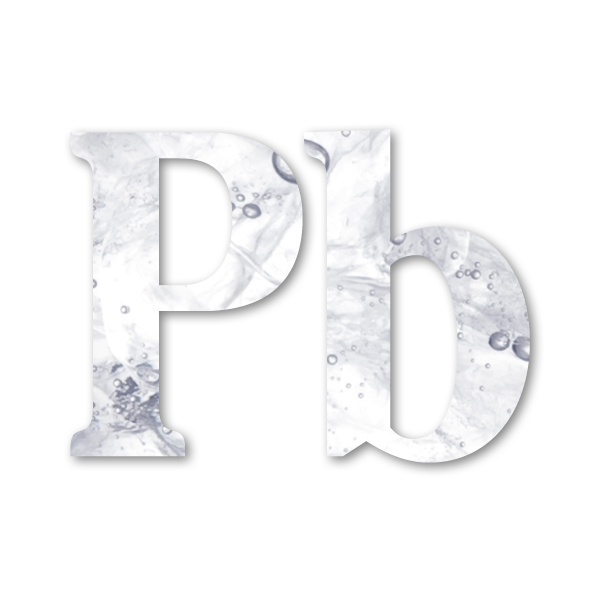
Short Term: Purchase bottled water.
Long Term:
If you install a water treatment system, be sure to conduct another test after the water has been treated to verify that the system is working effectively.
Your best help may be your local Health Agency. Also, go to the Helpful Links section of this website.
This information is meant to serve as a basic overview of the material discussed. Always obtain professional advice prior to implementing a plan of action.
Arsenic in drinking water is odorless, tasteless, and colorless. Arsenic (chemical symbol “As”) is a naturally occurring element in the earth’s crust and traces of arsenic can be found throughout the environment. Arsenic can combine with other elements to form inorganic and organic arsenicals. Primarily inorganic forms are present in water and are of most concern. Arsenic in soil may originate naturally and past human activities may have added to these levels in some areas. Historically, the heaviest use of arsenic in this country has been as a pesticide (e.g., used in agriculture such as at orchards). The more recent use of arsenic is as a wood preservative. Other sources include smeltors, glass, paints, fireworks, burning of fossil fuels, and electronics wastes.
A properly collected and preserved (with Nitric Acid) sample must be obtained. The “holding time” (i.e., time which arsenic must be analyzed after sample collection) is 6 months. There are a few NJDEP certified test methods for arsenic including Atomic Absorption (AA) and Inductively Coupled Plasma (ICP). The detection limits vary by method and instrumentation, however the Reporting Limit needs to be 10 ppb (ug/L) or less since this is the new standard (effective February 22, 2002).
Arsenic is a constituent classified as a “primary” standard and has a Maximum Contaminant Level (MCL) of 10 ppb (ug/L – micrograms per Liter). The prior limit was 50 ug/L.
Potential health effects include several types of cancer, skin abnormalities, gastrointestinal, cardiovascular, and nervous system impacts.
The answer is no for drinking water consumption. Also, do not boil water as a method of treatment because this will result in increased arsenic levels.
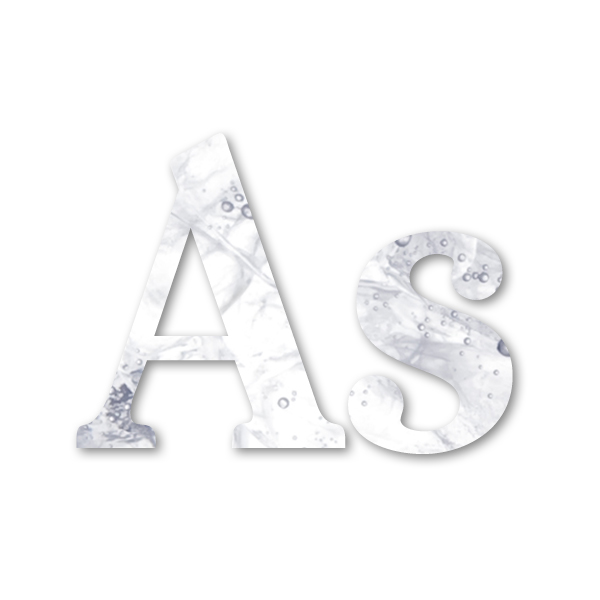
Short Term: Purchase bottled water.
Long Term:
If you install a water treatment system, be sure to conduct another test after the water has been treated to verify that the system is working effectively.
Your best help may be your local Health Agency. Also, go to the Helpful Links section of this website.
This information is meant to serve as a basic overview of the material discussed. Always obtain professional advice prior to implementing a plan of action.
Mercury is a shiny, silver-white metal (chemical symbol “Hg”) found in small amounts in the earth’s crust. Mercury is toxic to living organisms. Mercury exists as metallic mercury (such as is used in thermometers), inorganic mercury (such as mercuric chloride and used in batteries, paper manufacturing, mercury-based pesticides, and chemical industries), as well as organic mercury (such as methyl mercury – volatile, water soluble, highly toxic and found in large fish such as bass, sharks, tuna, and swordfish). Mercury, carried by wind and rain, is found throughout the environment mostly due to man-made releases such as burning of coal and oil, incineration, and applications of pesticides. Other sources include improperly disposed household products, such as mercury containing outdoor paints.
A properly collected and preserved (with Nitric Acid) sample must be obtained. The “holding time” (i.e., time which mercury must be analyzed after sample collection) is 28 days. There are a two NJDEP certified test methods for mercury – a Cold Vapor Atomic Absorption (AA) Technique and Inductively Coupled Plasma (ICP)/MS method. The detection limits vary by method and instrumentation. The test method must achieve a detection limit lower than the Maximum Contaminant Level (MCL).
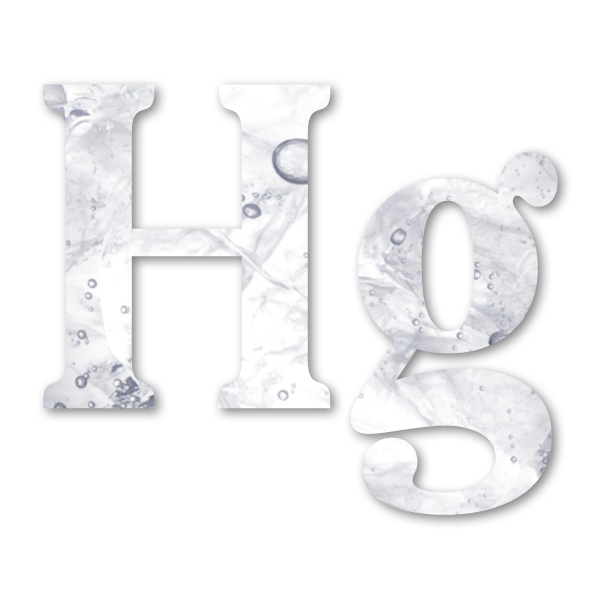
Mercury is a constituent classified as a “primary” standard and has a Maximum Contaminant Level (MCL) of 2 ppb (ug/L – micrograms per Liter).
Potential health effects include kidney and nervous system disorders. Inorganic mercury is poorly absorbed through the gastro-intestinal tract. Young children are more sensitive than adults to inorganic mercury since it is more easily absorbed into their bodies. At high exposure, inorganic mercury can affect the renal system as well as the nervous system causing symptoms such as irritability, nervousness, changes in vision or hearing, and difficulties with memory.
The answer is no for drinking water consumption. You should alert the local health agency and follow their advice. Also, do not boil water as a method of treatment because this can release certain forms of mercury into the air and can increase the levels of inorganic mercury as the water evaporates.
Short Term: Purchase bottled water.
Long Term:
If you install a water treatment system, be sure to conduct another test after the water has been treated to verify that the system is working effectively.
Your best help may be your local Health Agency. Also, go to the Helpful Links section of this website.
This information is meant to serve as a basic overview of the material discussed. Always obtain professional advice prior to implementing a plan of action.
Gross Alpha Radionuclides are radiological contaminants specifically identified by measuring the concentration of radionuclides that emit alpha particles and this test procedure provides for targeted testing for radioactivity from Radium 224 and 226 using a NJDEP modified 48 hour Rapid Gross Alpha test method.
Although radiological contaminants have numerous origins such as atomic energy, medical diagnosis and treatment, and mining of radioactive materials, the NJDEP has identified that certain locations in southern New Jersey have elevated levels of naturally occurring radioactivity in drinking water being drawn from the Kirkwood - Cohansey aquifer. Water of high radioactivity is unusual; nevertheless, it is known to exist in certain areas, from either natural or man-made sources.
A properly collected and preserved sample must be obtained. The “holding time” (i.e., time which Gross Alpha must be analyzed after sample collection) is 36-48 Hours. The NJDEP certified test method is modified to require expedited initial counting to “capture” the radioactivity of the short half-life for Radium 224.
If the calculated values from the initial gross alpha count is less than 5 pCi/L (picocurie per liter), that value shall be reported. However, if the gross alpha count exceeds 5 pCi/L, then the sample shall be recounted between 20 to 28 hours after the initial count, and this calculated value shall be reported as the final gross alpha result and shall not exceed the Maximum Contaminant Level (MCL) of 15 pCi/L.
The potential health effects are cancer causing.
You should alert the local health agency and follow their advice.
Short Term: Purchase bottled water.
Long Term:
If you install a water treatment system, be sure to conduct another test after the water has been treated to verify that the system is working effectively.
Your best help may be your local Health Agency. Also, go to the Helpful Links section of this website.
This information is meant to serve as a basic overview of the material discussed. Always obtain professional advice prior to implementing a plan of action.